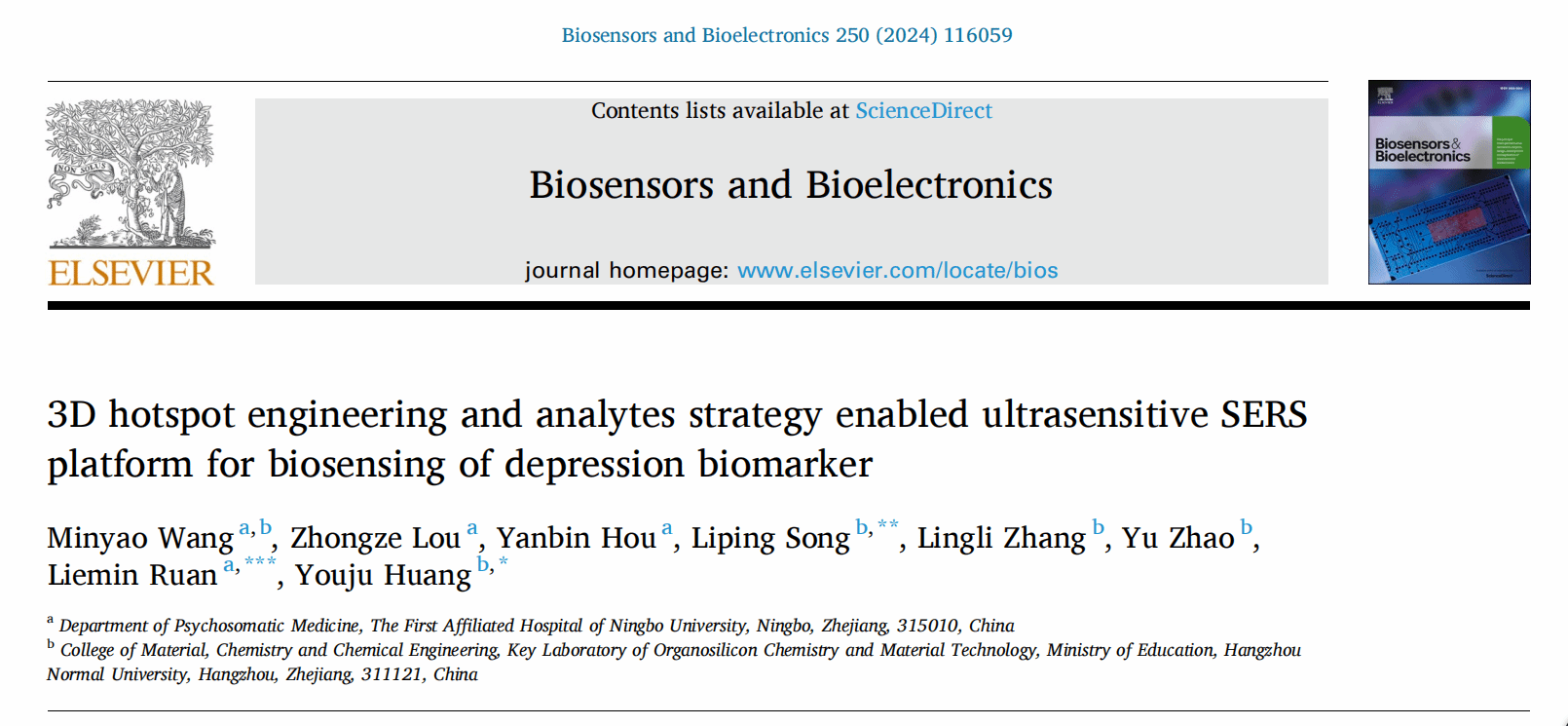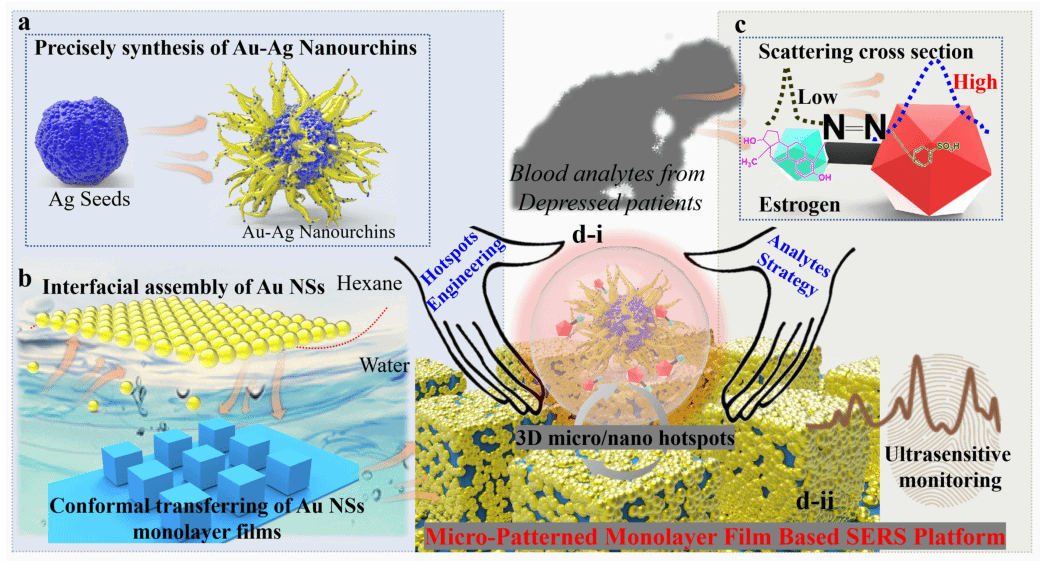In March 2024, Wang Minyao, a 2021-level master's student specializing in Psychiatry and Mental Health from the Medical Department, was the sole first author to publish an original research paper titled "3D hotspot engineering and analytes strategy enabled ultrasensitive SERS platform for biosensing of depression biomarker" in the journal "Biosensors and Bioelectronics" (a top-tier SCI dual-zone journal with an impact factor of 12.6). The paper presents an integrated platform based on 3D hotspot engineering and analyte strategies for ultrasensitive fingerprint detection of estrogen, paving the way for universal and highly sensitive biosensing. It provides a theoretical foundation for the study of the correlation between estrogen and depression in adolescent females, showing great potential for clinical translation and application in biochemical testing and disease prediction. The corresponding authors of the paper include Professor Ruan Liemin from the First Affiliated Hospital of Ningbo University, Professor Song Liping, and Professor Huang Youju from Hangzhou Normal University. The research was funded by the National Natural Science Foundation of China, Zhejiang Provincial Natural Science Foundation, Ningbo Key Research and Development Program, and Ningbo Major Social Development Projects.

Significant progress has been made in understanding the pathological mechanisms of depression, and a vast amount of animal research has been conducted on the neurobiology of depression. However, extrapolating from animal models of depression and translating basic scientific findings into clinical practice is challenging. Therefore, to understand the pathophysiology of depression, evidence directly provided by clinical studies should be considered and compared with that from animal studies. The hypothalamic-pituitary-gonadal axis is a multi-level hormone system that regulates the secretion of female ovarian hormones (estrogens and progesterone) through multiple feedback mechanisms involving the ovaries, pituitary, and brain. During the reproductive and menopausal transition periods, irregular fluctuations in ovarian hormones create a dynamic environment for the emotional regulation and cognitive systems affected by these hormones. Women with a history of depression are more likely to experience increased depressive symptoms during periods of ovarian hormone fluctuation. Despite these insights, there has not yet been a successful translation into effective clinical diagnostic methods. Chemical methods for analyzing stress biomarkers to reflect the body's endocrine response to stress stimuli are an attractive approach. In recent years, surface-enhanced Raman spectroscopy (SERS) detection, which offers both fingerprint characteristics and single-molecule scale specificity, has been widely applied in the field of bioanalysis. However, creating reliable and sensitive SERS substrates remains challenging. To address this, the study designed a novel SERS platform that integrates hotspot engineering and analyte strategies, achieving high sensitivity analysis of typical depressive biomarkers such as estrogen in adolescent females. On one hand, a three-dimensional micro-nanoplasmonic substrate containing Au-Ag alloy nanoparticles (AAA-NUs) and an array-based monolayer film of Au nanoparticles (Au NPs) was constructed to achieve high density and hotspot availability; on the other hand, an analyte strategy was designed through rapid diazo coupling reactions to further enhance the scattering cross-section of estrogen in the form of diazo compounds.

This platform, integrating 3D hotspot engineering with analyte strategies for ultrasensitive fingerprint detection of estrogen, lays the groundwork for universal and highly sensitive biosensing. It provides a theoretical basis for the study of the relationship between estrogen and depression in adolescent females, offering significant potential for clinical translation and application in biochemical testing and disease prediction.